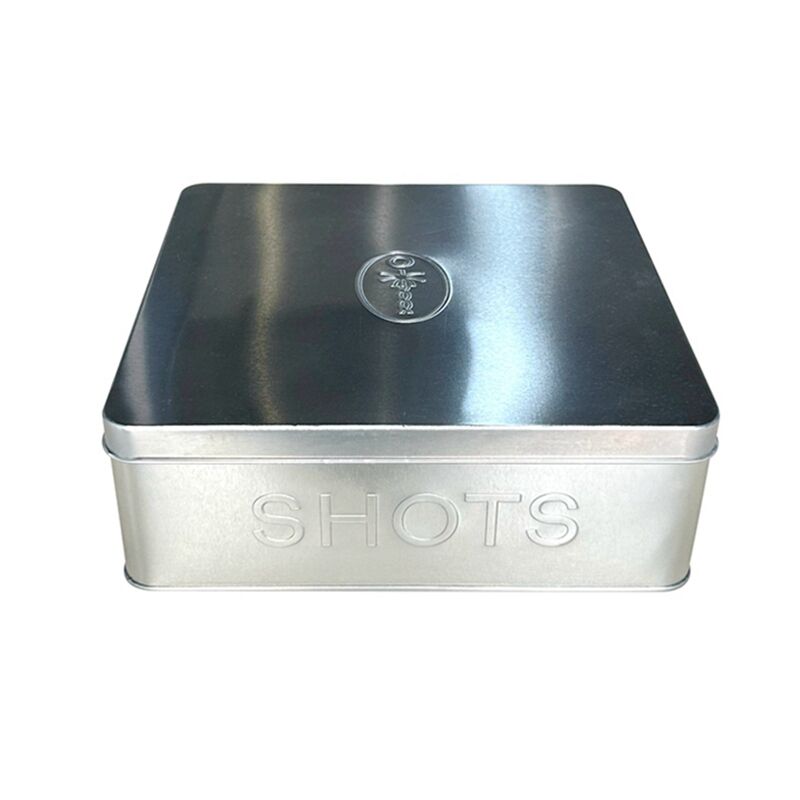Cum Operculis Introductio
Hae tinni cum operculis pars sunt vitae cotidianae omnium, ab conservando cibum ad reponenda res trivialia. Destinantur ad servandam recentiam et tuendam contenta dum commoda sunt ad usum. Materia continens est clavis factor in formandis quomodo efficax, diuturnus et amicus ambiens hi canes ex diversis materiis construantur. Cum hoc in mente, in hoc articulo examinabimus quasdam ex materiis communiter adhibitis pro tinni cum operculis et tangemus factores influentes in eorum electione.
Materiae ad Faciendum Communes Tinnos cum Operculis
Aluminium Tinplate ad aptationem contractam (Electrolytice Coatum Ferrum) Tinplate, vel tinplating electrolyticum, est materia tradita ad usum pro tinis cum operculis. Est tenuis lamina ferri et minima tinis coating ad superficies lenes, non-reactivas in amplissimis areis praebendas. Tinplate pretiosum est ob proprietates barrier, ab oxygenio ad vapor aquae. Idoneum est in industria cibaria, quia, praeterea, tinplate relative parvo pretio est et excellentem formabilitatem habet, in multas formas et magnitudines tinorum formari potest.
Aluminium Aluminium est optio popularis quia levior et ductilis est. Etiam valde recyclabile est, quod ad amicitiam cum ambitu confert. Praesertim, tinna aluminium validas proprietates barrier ad lucem et aerem ostendit, quae critica sunt ad cibum conservandum. PRODUCTS recens. Etiam notae sunt ob durabilitatem et resistentiam ad corrosionem, vitam longam pro productis quae continent.
Ferrum Inoxydabile Ferrum inoxydabile eligitur propter robustam et validam naturam. Corrosioni et maculis resistit, idoneum faciens ad longum tempus recondenda cibaria et alia articula. Tinnea ferrea inoxydabilia etiam agnoscuntur pro sanitariis condicionibus et cibi securitate, cum facilius purgari et disinfectari possint.
Materiae Plasticae
Polypropylenum (PP) Polypropylenum est materia plastica levior et cost-effective. Late adhibetur, plerumque tinnea cum operculis. Excellentem resistentiam ad chemica habet et varias temperaturas sustinere potest, idoneum etiam ad recondenda cibaria calida et frigida. Polypropylenum etiam notum est pro sua recyclabilitate, quod ad viriditatem eius addit.
Polyethylene Terephthalate (PET) Terephthalate (PET) est materia plastica translucida quae saepe adhibetur propter claritatem et recyclabilitatem. Proprietatem modicam barrier habet et saepe adhibetur ad sarcinas ciborum, praesertim ciborum siccorum et snackorum. PET tinni cum operculis leves sunt et processum recondendi et serviendi ciborum decorant.
Vitrum
Vitrum longam historiam habet adhibitum pro recondendis cibis quia est impermeabile ad gasa et humiditatem. Est materia excellens ad servandum et saporem et recentiam ciborum. Vitrea tinni reutilizabilia sunt et recyclabilia, quod eos amicos ambitus facit; sed comparati cum metallicis vel plasticis aequalibus, graviora sunt ac delicatiora.
Materias compositas
Materiae Laminatae Materiae laminatae paper, plasticum et aluminium coniungunt ad creandum barrier multi-laminatum quod contenta contra humiditatem, oxygenium et lucem protegit. Hae materiae in variis applicationibus sarcinarum adhibentur, inclusis tinni cum operculis. Bonam aequationem sumptuum et beneficiorum praebent.
Materiae Bio-fundatae Ascensus packaging amicorum ambiens adduxit ad evolutionem materiarum bio-fundatarum pro tinis cum operculis. Hae materiae ex fontibus renovabilibus oriuntur et biodegradabiles sunt, meliorem optionem praebentes in ratione ambiens. Quamquam adhuc iuvenis campus est, materiae bio-fundatae sunt una ex regionibus plenis potentiae in investigatione et evolutione applicationum packaging.
Primum omnium, electio materiae pro tinis cum operculis determinatur a multis considerationibus inter quas sumptus, impactus ambiens, necessitates functionales, pulchritudo et regulas conformitatis. Omnes hi factores simul ponderandi sunt a fabricatoribus ut productum producere possint quod et necessitates consumptorum satisfacit et ambiens non laedit.
Processus Fabricationis pro Tinis cum Operculis
Processus fabricandi tinni cum operculis ab uno materia ad aliam differt. Stamping, trahens et profundum trahens in fabricandis tinni metallicis inveniuntur sed non in continentibus plasticis. Formatio plastica et extrusio tinni plastici producunt, dum inflatio vitri et technicae formandi continentia vitrea creant. Laminatio et processus coating necessariae gradus sunt in fabricando materialium compositarum.
Conclusiones
In conclusione, materiae ad faciendum tinni cum operculis variae et diversae sunt. transitus ad invicem. Est decisio essentialis in consilio producti, sive sit traditum tinplate sive moderna materia bio-fundata. Cum postulatio consumptorum et conscientia environmental mutantur, materiae et processus fabricandi tinni cum operculis continue mutantur.

 EN
EN
 AR
AR BG
BG HR
HR CS
CS DA
DA NL
NL FI
FI FR
FR DE
DE EL
EL IT
IT JA
JA KO
KO NO
NO PL
PL PT
PT RO
RO RU
RU ES
ES SV
SV CA
CA IW
IW ID
ID LV
LV LT
LT SR
SR SK
SK SL
SL UK
UK VI
VI SQ
SQ HU
HU TR
TR FA
FA MS
MS GA
GA CY
CY LA
LA